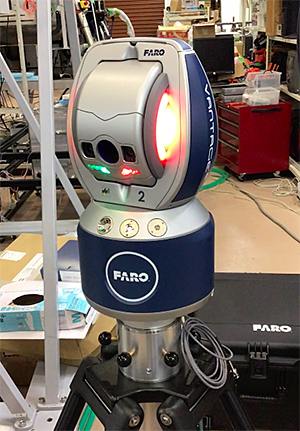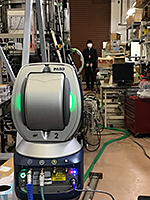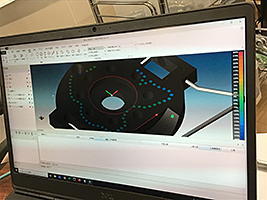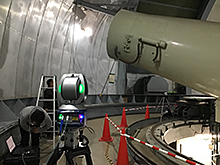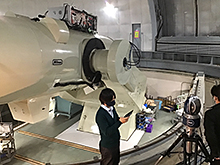
|
TAO Project |
|
The TAO project
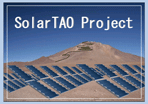
|
Laser Tracker Training ~for the preparation of mechanical and optical measurements of the TAO telescopeWhat is telescope shape measurement using laser trackers?Astronomical telescopes need to be moved from moment to moment so that they can make the pointing of targets in diurnal motion. Generally, the larger the telescope, the narrower the field of view, and requires more accuracy in pointing and tracking. If a telescope is rigid, manufactured and assembled precisely according to the designed values, without temperature-dependent shrinkage, it would be easy to control the telescope. However in fact, telescopes will deflect and have some errors in processing, fabrication, and installation. In addition, telescopes will expand and contract in response to the outside temperature. In actual operation, we need to control telescopes reflecting these "deviations" from the ideal state. Therefore, it is necessary to measure the deflection due to differences in the orientation and angle of the telescope in advance, which is the basis for optical adjustment of the telescope. Measuring instrument : FARO®For these measurements, we, the TAO project purchased dedicated optical measurement equipment, FARO. It is a 3D laser range finder by FARO® that measures the distance to a target by capturing the laser emitted from the main unit, reflected off a corner-cube shaped target placed on the object, and then returned to the main unit. By moving the target or placing it in multiple locations for measurement, the 3D shape and structure can be determined. As practical use, it is used in a wide range of applications such as construction sites, manufacturing, and measurement of automobiles, aircraft, and ships.
Training using FAROSpecial training by FARO company is required to use FARO. FARO has detailed settings due to its high functionality, and accurate measurements can be made by making those optimal settings. In addition, the software functions are also well-developed, so necessary measured values can be obtained by selecting and specifying optimal conditions and parameters for the actual measurement. There was a FARO training at the Institute of Astronomy (IoA), Mitaka in February 2022. Drs. Minezaki, Takahashi, Asano and Horiuchi attended it to learn how to set and use FARO. The training lasted three days, starting with installation, startup, and initial setup, and with various demonstration measurements and processing and understanding of the measured values.
Practical measurement using Kiso Schmidt TelescopeThen, in May 2022, practical measurements were carried out using the Schmidt telescope at the Kiso Observatory. This is to master the technique of measuring the precise movement that a large telescope can provide, and to study how to make setting and how to measure at the TAO telescope. In the actual measurement, a target was placed at the tip of the telescope, tracked virtuality object, and measured micro-vibrations of thr telescope. In addition at the TAO telescope, we first need to know the rotational axis of the Nasmyth flange to determine the optical axis accurately. We placed a mirror target on the equatorial rotational axis flange of the Schmidt telescope and moved the telescope in the declination direction simulating measurement at the TAO telescope. This measurement provided us with food for thought for studying the location of the target, the position of the rangefinder itself, and what settings would be best.
The measurement equipment will be transported to Chile to be used in the assembly of the telescope. The results of this training will be shown in the measurements at the summit of 5640m.
Copyright(c) 2024 TAO Project, Institute of Astronomy, Graduate School of Science, University of Tokyo
|
